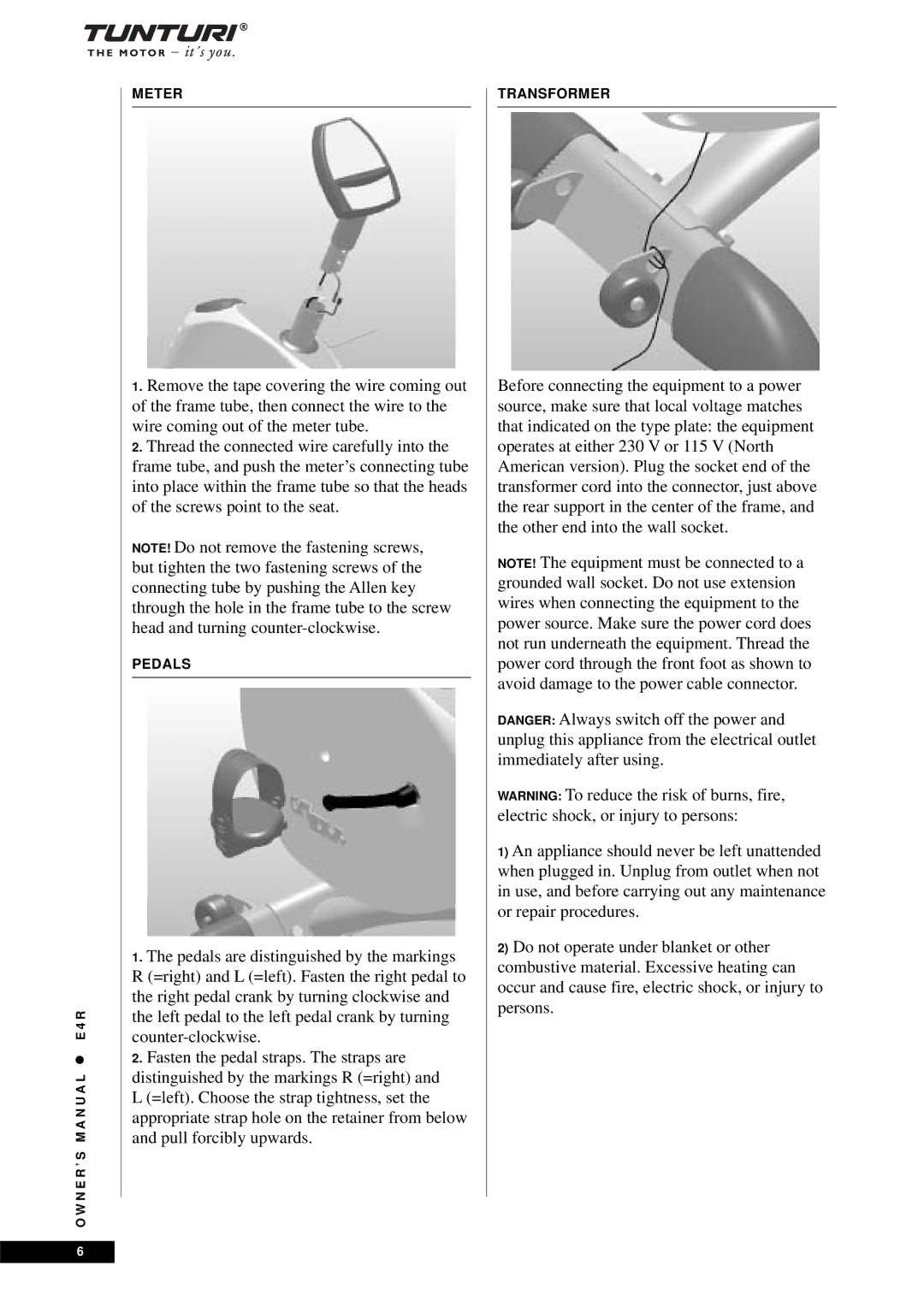E4R specifications
The Tunturi E4R is a premium recumbent exercise bike designed for fitness enthusiasts looking for a comfortable and effective workout experience. Blending innovative technology with user-friendly features, the E4R caters to individuals of all fitness levels, making it an ideal choice for home gyms.One of the standout features of the Tunturi E4R is its ergonomic design. The recumbent position allows users to engage in their workouts while minimizing strain on the back and joints. The adjustable seat provides excellent lumbar support, ensuring a comfortable posture during extended use. The step-through frame design enhances accessibility, making it easy for users of all ages and physical conditions to get on and off the bike with ease.
The E4R is equipped with a sophisticated console that showcases a large, easy-to-read display. This LCD screen provides valuable real-time feedback on key metrics such as time, speed, distance, calories burned, and heart rate, allowing users to track their progress effectively. The bike also features built-in Bluetooth connectivity, enabling integration with fitness apps, which enhances the overall workout experience.
When it comes to performance, the Tunturi E4R boasts a high-quality magnetic resistance system. This technology ensures a smooth and quiet ride, providing users with up to 32 resistance levels to choose from. Such a wide range of options allows for customization of workouts, accommodating both beginners and more advanced users seeking to challenge themselves further.
Additionally, the E4R comes with multiple pre-set workout programs designed to cater to various fitness goals, including weight loss, endurance training, and interval training. These programs keep workouts engaging and can help users stay motivated. The bike is also equipped with heart rate sensors located in the handgrips, which allow for convenient monitoring of cardiovascular performance during exercises.
The Tunturi E4R is designed with durability in mind. The robust construction can withstand rigorous use, and the maintenance-free components ensure longevity, making it a worthwhile investment for fitness enthusiasts. Compact in design yet feature-rich, the E4R fits seamlessly into any home gym setup while delivering a premium workout experience.
In conclusion, the Tunturi E4R recumbent exercise bike combines comfort, performance, and advanced technology, making it an excellent choice for anyone looking to incorporate effective cardiovascular workouts into their fitness routine. With an ergonomic design, a variety of resistance levels, and engaging workout programs, the E4R stands out as a versatile and high-quality fitness machine.

